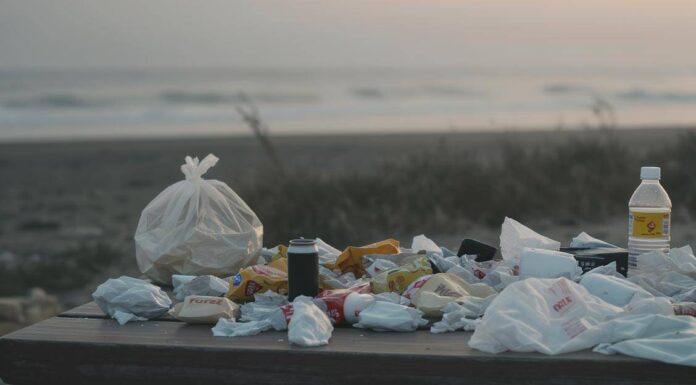Introduction
In a world drowning in discarded plastics, the promise of recycling shines as a beacon of hope. Yet, evidence mounts that this promise may be more illusion than solution. With only 9% of U.S. plastics actually recycled and global rates echoing this dismal figure, the efficacy of traditional recycling methods is under scrutiny. This article delves into the current state of plastic waste management, unearthing the complexities behind the recycling rhetoric and exploring innovative approaches that could pave the way to a sustainable future.
The Reality of Recycling Rates
Despite decades of public campaigns promoting recycling as the panacea for pollution, key figures tell a different story. Annual global plastic production surpasses 400 million metric tonnes, yet less than 10% of this is reclaimed through recycling. By 2050, incineration, which recovers energy at the cost of emitting CO2 and water, is expected to process almost half of all plastic waste. Such statistics highlight a critical disconnect between recycling aspirations and realities.
Quote from Nature Communications (2024): “The reliance on virgin plastics continues unabated, fueled by economic incentives that starkly undermine recycling efforts.”
Technological Innovations in Recycling
Emerging technologies present glimmers of hope. Recent developments like Northwestern University’s moisture-based chemical recycling method break down colored plastics into pure monomers. Meanwhile, University of Alabama researchers optimize PET plastic recycling through advanced chemolysis, enhancing both efficiency and the quality of recycled materials.
Expert Opinion from Dr. Jane Hollister, University of Wisconsin-Madison: “Innovative chemical upcycling can transform low-value plastics into high-value chemicals, offering an economically viable solution beyond traditional methods.”
Systemic Challenges and Industry Influence
Recycling struggles are compounded by systemic issues ranging from inadequate infrastructure to misleading industry narratives. Plastic producers have historically promoted recyclability while privately acknowledging its economic and technical limitations—a practice that has continued with modern ‘advanced recycling’ technologies.
Industry Analysis from The Guardian (May 2025):
“Despite new technologies being marketed as environmental breakthroughs, they often fail to scale up effectively without significant energy input and infrastructure overhaul.”
Global Policy Dynamics and Solutions
Globally coordinated efforts like the Global Plastics Treaty are essential for meaningful change. Policies enforcing Extended Producer Responsibility (EPR) can shift financial burdens back onto manufacturers, incentivizing them to produce less and recycle more.
Insight from International Journal of Environmental Research (2023):
“EPR laws could drastically reduce virgin plastic production if implemented widely and rigorously.”
Perspectives on Future Paths
While technological advances offer some hope for improving recycling efficacy and reducing environmental impact, true sustainability may require more radical shifts towards reducing overall plastic production and increasing reuse and refill systems.
Visionary Thought from CIEL Report (2025):
“Moving towards a model of degrowth and stringent production capping could ultimately prove more effective than any recycling innovation.”
KEY FIGURES
- Only 9% of plastics in the U.S. are actually recycled; most plastic waste, including flexible films, multilayer materials, and colored plastics, cannot be recycled cost-effectively[2][3].
- Global plastic production exceeds 400 million metric tonnes annually, with recycling rates globally around 9%[3].
- Almost 50% of total plastic wastes are predicted to be processed by incineration by 2050, which recovers energy but releases CO2 and water[5].
RECENT NEWS
- March 2025: Northwestern University developed a new moisture-based chemical recycling method that can break down colored plastics into pure components, aiming to scale it industrially for significant pollution reduction and circular economy contribution[1].
- October 2024: University of Alabama researchers advanced chemolysis methods for recycling PET plastics more efficiently, potentially improving recycled plastic quality and reusability[4].
STUDIES AND REPORTS
- A 2024 Nature Communications study highlights that despite advances, plastic recycling remains insufficient to offset rising production and pollution, with low recycling rates and economic incentives favoring virgin plastics. It emphasizes the need for improved recycling technologies, design-for-recyclability, stronger economic drivers, and global policy frameworks like the Global Plastics Treaty[3].
- A 2023 review in International Journal of Environmental Research underscores the challenges of plastic waste management, noting landfilling is problematic due to space and environmental risks, while incineration is growing as a method for energy recovery though it emits greenhouse gases[5].
- University of Wisconsin-Madison research (2023) developed a chemical upcycling process combining pyrolysis and hydroformylation to convert plastic waste into high-value chemicals, potentially overcoming economic and quality barriers in recycling and enabling a circular plastics economy[2].
TECHNOLOGICAL DEVELOPMENTS
- Moisture-based chemical recycling (Northwestern University, 2025): Breaks down mixed and colored plastics into pure monomers for reuse, promising a greener recycling pathway[1].
- Chemical upcycling combining pyrolysis and hydroformylation (UW-Madison, 2023): Converts plastic waste into valuable chemicals rather than low-grade recyclates, enhancing economic viability[2].
- Advanced chemolysis for PET recycling (University of Alabama, 2024): Improved depolymerization processes aimed at producing high-quality recycled polymers with broad application potential[4].
MAIN SOURCES
- https://news.northwestern.edu/stories/2025/03/plastic-recycling-gets-a-breath-of-fresh-air/ — Coverage of Northwestern’s new moisture-based chemical recycling technology.
- https://www.energy.gov/eere/bioenergy/articles/revolutionary-recycling-process-transforms-plastic-waste — Details on UW-Madison’s chemical upcycling innovation for plastic waste.
- https://www.nature.com/articles/s44296-024-00024-w — Comprehensive 2024 scientific review on plastic recycling challenges and policy frameworks.
- https://news.ua.edu/2024/10/ua-chemical-engineer-plastic-recycling/ — Report on advances in chemical recycling of PET plastics by University of Alabama.
- https://pmc.ncbi.nlm.nih.gov/articles/PMC9857911/ — Review on plastic waste management options including landfilling and incineration impacts.
Synthesis: Current evidence shows that plastic recycling, as traditionally practiced, recycles only a small fraction of plastic waste due to technical, economic, and contamination challenges, while virgin plastics remain cheaper and more available. Industry marketing campaigns (e.g., Keep America Beautiful) and emerging “advanced recycling” technologies have been criticized as greenwashing because they often fail to address upstream fossil fuel extraction and downstream pollution, including microplastics and toxic additives. However, recent chemical recycling and upcycling innovations hold promise to improve recycling rates and product quality if scaled effectively. Globally coordinated policy efforts, like the Global Plastics Treaty, combined with systemic shifts such as reducing virgin plastic production, embracing reuse/refill systems, and enforcing Extended Producer Responsibility (EPR) laws, are increasingly seen as necessary to move beyond recycling as mere greenwashing toward genuine circularity and pollution reduction[2][3][5].
Other references:
- news.northwestern.edu – Plastic recycling gets a breath of fresh air – Northwestern Now
- energy.gov – Revolutionary Recycling Process Transforms Plastic Waste
- nature.com – Plastic recycling: A panacea or environmental pollution problem
- news.ua.edu – UA Engineer Pioneers New Process for Recycling Plastics
- pmc.ncbi.nlm.nih.gov – Plastic Waste: Challenges and Opportunities to Mitigate Pollution …
- pmc.ncbi.nlm.nih.gov – Source
- link.springer.com – Source
- pmc.ncbi.nlm.nih.gov – Source
- pubs.rsc.org – Source
- mdpi.com – Source
- nrdc.org – Source
- plasticpollutioncoalition.org – Source
- ciel.org – Source
- dw.com – Source
- globenewswire.com – Source
- theguardian.com – Source
- nature.com – Source
- ifc.org – Source
- cbsnews.com – Source



